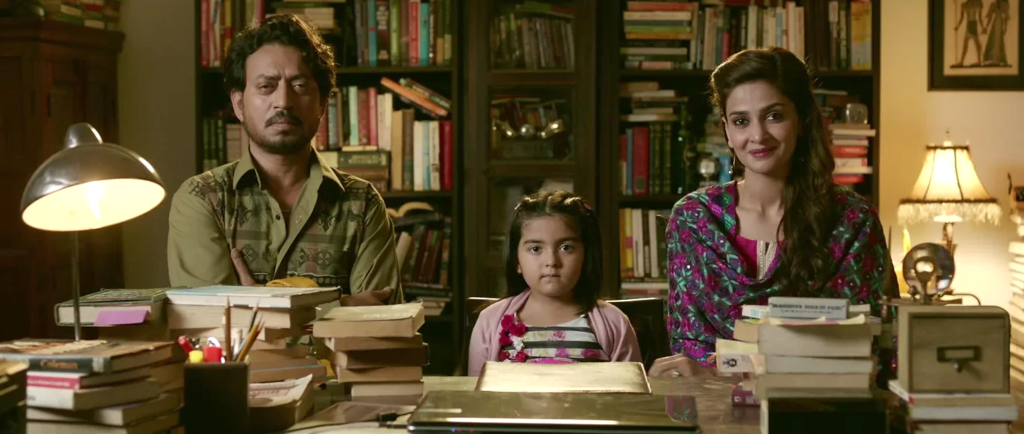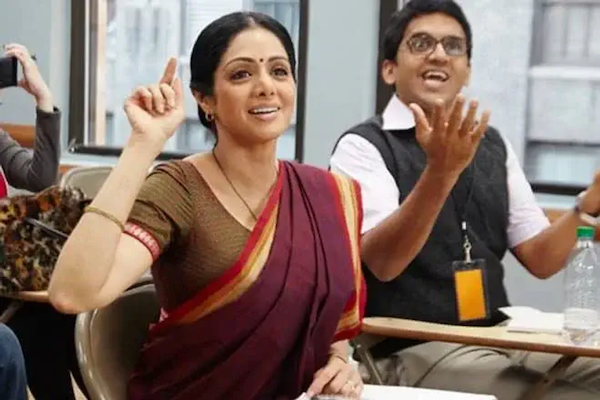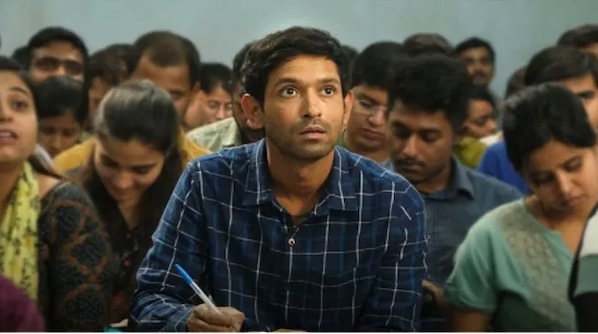Hinglish Versus Hindustani, Profanity Versus Poetry: What’s Wrong With Our Bollywood Bhasha Today?
- While India produces 1,500-2,000 films annually, a majority of them raise the hackles, prompting you to ask out loud, into what kind of abyss are Hindi language films sinking into today?

Ostensibly, Mumbai-produced cinema makes films in Hindustani, a blend of Hindi and Urdu. Or, to phrase it more precisely, Bombay’s cinema at least used to, from its inception right down to the cusp of the 1990s, after which dialogue writing went for a full toss.
Streetwise colloquialisms, a gobbledygook form of Hinglish, scant regard for grammatical construction are in. And with the advent of OTT-series, no-holds-barred profanities, are here to stay.
The difference between a male and female noun (‘streeling’ and ‘pulling’) has been shot to hell, particularly in films and series located in Bihar (“Bhakshak” on Netflix is a recent example).
Generally speaking, pronunciations irk. Example: It should be ‘Tumhe kya chaahiye?,’ instead of ‘chaiye’ as if referring to a cup of tea. Imagine if ‘chaahat’ was abbreviated to ‘chahat.’
Besides the corruption of the dialogue, lyrics are mind-bashers. The glorious era of Sahir Ludhianvi, Kaifi Azmi, Shakeel Badayuni, Majrooh Sultanpuri, Shailendra, Qateel Shifai and Nida Fazli to name just a few has evaporated with the wind. Mercy be then for the stalwarts, Gulzar and Javed Akhtar who still strive to maintain a sanctity in the discipline of song and dialogue writing.
Both of them were criticized though: Javed Akhtar for Ek Do Teen (“Tehzaab”), and Gulzar for the risqué Bidi Jalaiyle (“Omkara”) and Kajra Re (“Bunty aur Babli”). They defended themselves by emphasizing that this is contemporary, the manner in which language is now used and understood by the audiences. Largely, though both have stuck to quality control over the bane of blasting lyrics to smithereens.
Indeed, Javed Akhtar had dropped out from writing the songs of Karan Johar’s “Kuch Kuch Hota Hai,” since he felt the title amounted to a sexual innuendo. And if I may add, there could have been no other finer lyricist than Javed Akhtar to render shape to the thumris in Shyam Benegal’s “Sardari Begum” (Chaahe Maar Daalo Raja,Chali Pee ke Nagar, Ghir Ghir Aayee Badariya Kaari, Huzur Itna Agar, More Kanha Jo Aaye Palat Ke, Raaha Mein Bichhi Hain Palkein and Sanwariya Dekh Zara Iss Or).
The late Shahryar’s (“Umrao Jaan”) lyrics were masterly. Litterateur and dialogue writer Javed Sidiqui, too, does not succumb to compromises. Not surprisingly, the workload of Javed Sidiqui, Gulzar and Javed Akhtar has diminished drastically.
Javed Sidiqui and Shama Zaidi had authored memorable dialogue for Satyajit Ray’s only Hindi film “Shatranj Ke Khiladi.” Significantly, Shama Zaidi’s contribution to the oeuvre of Shyam Benegal has been exemplary.

Evidently, a decade before the new millennium, top music barons, producers and financiers made it a policy to pander to the lowest-denominator. At a pinch, the trick is to just dip into the music vaults for a quickie, synthesizer-overloaded remix of vintage chartbusters.
The belief – mistaken or otherwise – is that this is what today’s youth wants. Hence, if Mumbai-produced cinema’s dialogue and lyrics are sprinkled with subtitles, the outcome ranges from the laughable to the ridiculous.
What’s the big deal in a language you might ask? Plenty. Bollywood now appears to advance the notion that the ingredient of English signifies ‘classy values’ while Hindi and state-specific dialects are downmarket. The ‘purists,’ who are dismayed by this are ignored, permitted to wag their tongues in vain.
Incidentally, India is stated to have as many as 22 official languages. The use of a mishmash of dialogue incorporating slang, cuss words, garbled English– have inexorably permeated, as well, into the popular, high-budget entertainers of Telugu, Tamil, Gujarati, Bengali and Malayalam cinema.
The neo-argot of film speak has become acceptable.
Quite piquantly, back in 2017 in the course of a week, two simultaneous releases, “Hindi Medium” and “Half Girlfriend” had addressed the issue of Hindi versus English. Of them, “Hindi Medium” directed by Saket Chaudhary, toplining Irrfan Khan and Pakistani actress Saba Qamar, did drive some valid points home impactfully.
As for “Half Girlfriend,” adapted from a Chetan Bhagat novel and directed by Mohit Suri, it displayed a quarter-baked approach to the story of a boy (Arjun Kapoor) from Bihar, whose origin and spoken language are handicaps in the supposedly cool ambience of a New Delhi campus– clumsily named St. Steven’s to allude to the hallowed St. Stephen’s College.
Needless to lament, times have changed dramatically. In real-life, too, Hindi or Urdu isn’t spoken with their traditional purity.
Expectedly, the medium-budget “Hindi Medium” (followed by the weaker sequel Homi Adajania’s “Angrezi Medium”) was garlanded with rave reviews to the extent of overpraising the film.
Alongside, Mohit Suri’s “Half Girlfriend” opened to brickbats from the critics. But there’s no predicting the taste of the ticket-buying public at large. Believe it or not, the Arjun Kapoor-Shraddha Kapoor romance fetched more than satisfactory results at the all-important box office.
Few if any of the movie writers, nowadays, are well-versed in Hindustani (Prasoon Joshi and Swanand Kirkire have their excellent days, albeit) which once segued Hindi and Urdu seamlessly.
Once, there was a litany of legendary writers, whose pens were remarkable in dialogue of the literary kind, the prime examples being Wajahat Mirza, Kamal Amrohi, Kaifi Azmi, Abrar Alvi and Rahi Masoom Raza. It goes without saying that it would be futile to long for their kind of finesse and respect for grammar in today’s anything-goes times.
Needless to lament, times have changed dramatically. In real-life, too, Hindi or Urdu isn’t spoken with their traditional purity. Perhaps Amitabh Bachchan is the only actor, who has used Hindi as the language ought to be on the “Kaun Banega Crorepati” television game show.
Among the heroines, at least Vidya Balan has sought to get her accents dot-on in her dialogue delivery. Tabu and Sushmita Sen, too, have elocuted the dialogue assigned to them with fluency. Ajay Devgn, Shah Rukh Khan, Aamir Khan, and Hrithik Roshan too, get their accents and intonations right.

To rewind, it was the auteur director Hrishikesh Mukherjee with his origins in Bengal, who had tackled the misuse of Hindi language with outstanding, tongue-in-cheek results, particularly in “Anand” and “Chupke Chupke” with the collaboration of his writers Gulzar and Rahi Masoom Raza (“Gol Maal”).
Earlier, Mukherjee’s mentor Bimal Roy had extracted unforgettable dialogue from Paul Mahendra (“Do Bigha Zameen,” “Bandini,” “Sujata”) and Rajinder Singh Bedi (“Madhumati”).
Perhaps, the down curve of the art of writing dialogue began with the excessive use of double entendres in the David Dhawan comedies. Dhawan dipped lock-stock-and-lexicon into the streetwise dialogue of Manmohan Desai, who at the very least was inspired by real-life people.
As Desai would say, with pride, the character of Anthony — a neighbor in the rough neighborhood of Khetwadi, showcased in “Amar Akbar Anthony” — in an inebriated condition, would babble away in a haze. The outcome was funny and endearing, no vulgarity crept in.
With time, when Bollywood films found a ballooning audience of Indians settled overseas, the mix of Hindi and English was perhaps warranted and fast. The youth audience, at home and overseas, related with characters who frequently spoke in a smattering of English, kicking off with Aditya Chopra’s “Dilwale Dulhania Le Jayenge.”
Karan Johar’s films (starting with “Kuch Kuch Hota Hai”) sought to adapt to the Westernized environment. English became ultra-cool. And this was especially underscored in “Ae Dil Hai Mushkil,” in which the fun-loving girl played by Lisa Haydon, made linguistic faux pas galore.
Both Aditya Chopra and Karan Johar have banked on polyglot dialogue. The scripts of Rajkumar Hirani (notably for the Munnabhai films), Farhan Akhtar and Zoya Akhtar have also attempted to be ‘hip’ and have at least carried it off smoothly. However, Zoya Akhtar’s “The Archies” was an inexcusable travesty.
As a rule, innumerable writers bank on bombast for almost every second line to titillate the audience with punchlines far more suitable to melodramatic stage plays.
Incidentally, the British TV series “Mind Your Language” (1977-1986) had inspired the Mumbai-produced soap “Zabaan Sambhal Ke” (1993-1997). The interplay of differing languages and dialects contributed towards making the Zabaan… series a household rage.
In a similar vein, Gauri Shinde’s feature film “English Vinglish” zoomed in on a housemaker, marvellously portrayed by Sridevi, who joins a language course in New York, to keep pace with her Angrezi-speaking husband and daughter.
The gross disparity between state languages and the cultures of a region was most effectively narrated by K.Balachander’s “Ek Duuje ke Liye” (featuring Kamal Haasan-Rati Agnihotri). A valid point of archaic regional divides was being made here. Subsequently, Abhishek Varman’s “2 States” (Arjun Kapoor-Alia Bhatt) and Karan Johar’s “Rocky aur Rani ki Prem Kahani” (Ranvir Singh-Alia Bhatt) followed the same template.
Admittedly, Johar’s romedy packed in several hilarious and pungently satirical vignettes to depict the clash between two Punjabi and Bengali families, justifying the use of a kabhi chhole bhature Punjabi- kabhie macchar jhol-Bengali style dialogue, with dollops of Hindi and English thrown in for tadka.
Lately, Rajkumar Hirani’s “Dunki,” with Shah Rukh Khan and Taapsee Pannu in the lead) proved to be engaging and comic in its segment set in a spurious English coaching class for British-visa seeking candidates in a Punjab township. Alas, the scenario lapsed into la-la-land soon after, vended harrowing adventures through deep waters, and deserts (complete with an attempted rape scene) to digress disappointingly from its central point of why English should be a must for Indian immigrants to the U.K.

By contrast, Vidhu Vinod Chopra’s “12th Fail,” bravely stuck to its real-life premise of the travails of a young man (Vikrant Massey), from the once dacoit-infested Chambal Valley. It would be a spoiler to reveal the result of Massey’s finale interview with a panel of snobbish selectors for a placement in the Indian Police Service.
“12th Fail” ticked all the right boxes, blending entertainment with a socio-political concern. But it must be remembered that India produces 1,500-2,000 films annually, the most far-reaching and influential being from Bollywood. Of this output, a majority of them raise the hackles, prompting you to ask out loud, into what kind of abyss are Hindi language films sinking into today?
For sure, the audience – the masses or the mandarins — is more than aware of the steep and unstoppable decline in film language. But end up believing that this is how life and language are in reality today.
Like it or not, films are such an enormous influencer that in an utopian world, the youth, the middle-aged and the seniors, would cry out loud, “Mind your language!”
This story was first published in just-cinema.com and republished here with permission.
Khalid Mohamed is a Mumbai based film critic, screenwriter, producer and filmmaker.


